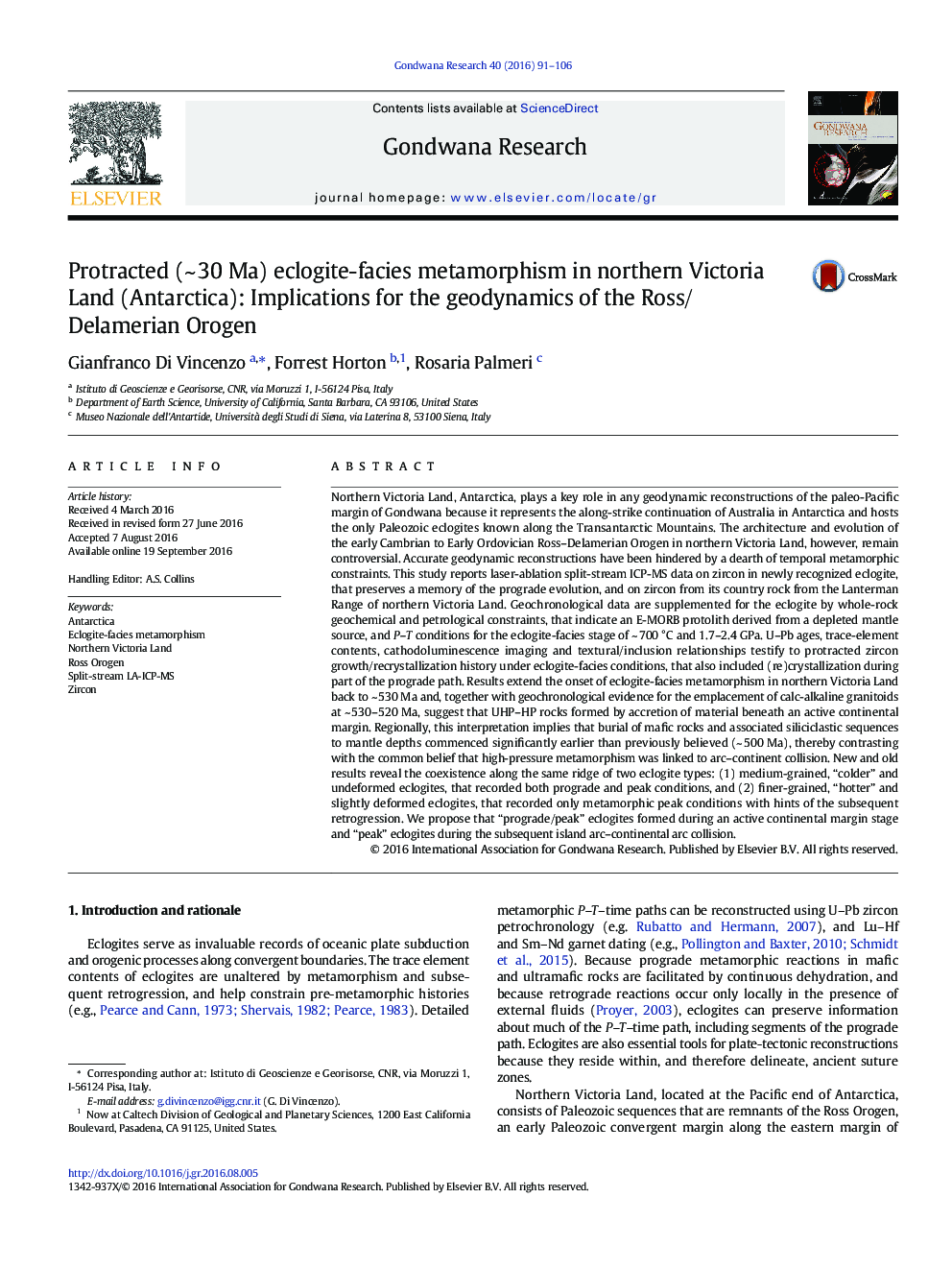| کد مقاله | کد نشریه | سال انتشار | مقاله انگلیسی | نسخه تمام متن |
|---|---|---|---|---|
| 4726546 | 1640131 | 2016 | 16 صفحه PDF | دانلود رایگان |

• Medium-grained eclogites from northern Victoria Land record prograde evolution.
• Zircon petrochronology suggests protracted (~ 30 Ma) eclogite-facies metamorphism.
• Subduction during the Ross orogeny was active in the early Cambrian.
• Prograde eclogites formed in an active continental margin during ongoing subduction.
Northern Victoria Land, Antarctica, plays a key role in any geodynamic reconstructions of the paleo-Pacific margin of Gondwana because it represents the along-strike continuation of Australia in Antarctica and hosts the only Paleozoic eclogites known along the Transantarctic Mountains. The architecture and evolution of the early Cambrian to Early Ordovician Ross–Delamerian Orogen in northern Victoria Land, however, remain controversial. Accurate geodynamic reconstructions have been hindered by a dearth of temporal metamorphic constraints. This study reports laser-ablation split-stream ICP-MS data on zircon in newly recognized eclogite, that preserves a memory of the prograde evolution, and on zircon from its country rock from the Lanterman Range of northern Victoria Land. Geochronological data are supplemented for the eclogite by whole-rock geochemical and petrological constraints, that indicate an E-MORB protolith derived from a depleted mantle source, and P–T conditions for the eclogite-facies stage of ~ 700 °C and 1.7–2.4 GPa. U–Pb ages, trace-element contents, cathodoluminescence imaging and textural/inclusion relationships testify to protracted zircon growth/recrystallization history under eclogite-facies conditions, that also included (re)crystallization during part of the prograde path. Results extend the onset of eclogite-facies metamorphism in northern Victoria Land back to ~ 530 Ma and, together with geochronological evidence for the emplacement of calc-alkaline granitoids at ~ 530–520 Ma, suggest that UHP–HP rocks formed by accretion of material beneath an active continental margin. Regionally, this interpretation implies that burial of mafic rocks and associated siliciclastic sequences to mantle depths commenced significantly earlier than previously believed (~ 500 Ma), thereby contrasting with the common belief that high-pressure metamorphism was linked to arc–continent collision. New and old results reveal the coexistence along the same ridge of two eclogite types: (1) medium-grained, “colder” and undeformed eclogites, that recorded both prograde and peak conditions, and (2) finer-grained, “hotter” and slightly deformed eclogites, that recorded only metamorphic peak conditions with hints of the subsequent retrogression. We propose that “prograde/peak” eclogites formed during an active continental margin stage and “peak” eclogites during the subsequent island arc–continental arc collision.
Figure optionsDownload as PowerPoint slide
Journal: Gondwana Research - Volume 40, December 2016, Pages 91–106